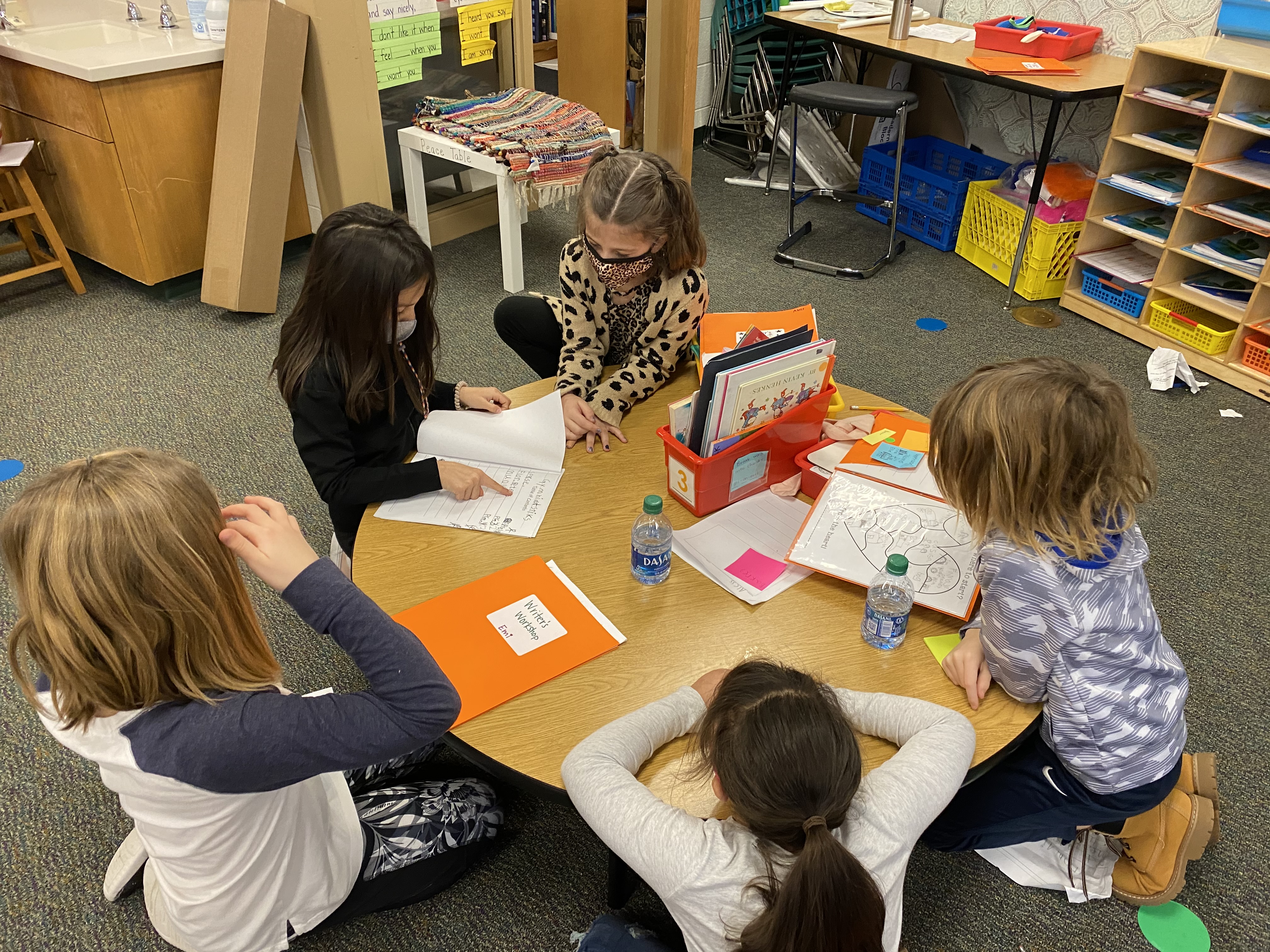Meadow Brook Elementary
2021-01-27
Mrs. Bice's Second Grade
Reminders
- Mon. Feb. 1 Book Orders Due
- We need a few more extra cereal boxes
- Thanks to everyone for donating supplies for our Valentine’s Day fun
Words We Learned
- array
- bodies of water
- erosion
Reader’s and Writer’s Workshop
This week we looked closer at reading keywords in our text and making meaning of unknown words. Second grade readers are often quick to read words but have a difficult time understanding their meaning. Nonfiction readers find keywords and work to know what those words mean. They can use text features (ex. bold print, labels, glossaries, text boxes. etc.) to help learn more about those keywords. Another strategy nonfiction readers use when they get stuck on a keyword they play around with the word, trying it one and then another way. We worked really hard on decoding these tricky unknown words!

In Writer’s Workshop we continued to work on writing to entertain our audience while also working to generate interesting nonfiction writing! Writers also realized that sometimes their writing can be a bit confusing. They worked on rereading, noticing when they have questions and clarifying information so it was easier to understand. Writers also worked on revising and editing their work. Being sure to check that their writing is easy to read, troublemaker words are spelled correctly, punctuation is in the right spot and that sneaky capital letters aren’t lurking in places they shouldn’t be! We have been growing like crazy as nonfiction writers!
Phonics
We have been having a ton of fun during phonics the past few weeks! Phonics Professors have been working hard at tackling multisyllabic words. We started the week by using our finger as a tool to read challenge words methodically and doing a slow check to make sure that the whole word looks right! Often, when young readers see multisyllabic words, they may miss one of the syllables when decoding the word! It’s really important for them to do a slow check to make sure they got every single syllable!

We also learned about some really sneaky consonant combinations, such as kn, wr, and gn! These consonants were really tricky at first but now we know that the first consonant is silent! Some of tricky consonants we looked at were C and G. We looked at how sometimes they make a soft sound (ex. city or gym) while other times it can be a hard sound (ex. common or garden)! It’s important for readers to try both the soft and hard sound until the word makes sense! Next week we will continue to explore more of these “camouflaged” letters! They sure are sneaky!
Science
We continued to explore the earth and all the different bodies of water! Collaborative groups explored streams, ponds, oceans, rivers and lakes! Students were able to make personal posters on some of the different bodies of water. We then moved into erosion and how water can really change the earth’s surface.
I presented the following question to the students: Why is there sand at the beach? Students investigated the effects of rocks tumbling in a river. Based on their observations, they constructed an explanation for why there is sand at a beach. In the activity, Rocking the River, students pretended to be a river and tear up pieces of construction paper to model what happens to rocks as they travel along the river. Be sure to ask your 2nd grade scientist the answer that they uncovered!

Math
We really dipped into lots of different standards this week in math! Students were introduced to the world of arrays. In 2nd grade students are given an introduction to multiplication through arrays. Partnerships worked together to use grid paper and create arrays using repeated addition. (ex. 3 + 3 + 3= 9) These activities are helping to prepare students to multiplication which they will learn in 3rd grade. Some mathematicians are ready for multiplication and instead of writing out the repeated addition they used multiplication facts.
We also spent some time on different strategies to mentally add and subtract 10 and 100. Students came up with lots of different ways they mentally add and subtract. The deeper foundation of numbers and how they are related, the easier mentally adding and subtracting is! This work then led us into using open number lines to add double digit numbers! I included an example below (29 + 36= 65) to help you better understand this strategy! This is a wonderful strategy for kids who need the visual in using a number line!

Jump Rope for Heart
Here is a special note from Mr. Payne: Your child has the opportunity to raise money for the American Heart Association to help fight heart disease. Heart failure is the leading cause of death in the United States. The money raised will go to research, medical labs, and doctors to help fight heart disease. Last year we raised over $8000, which exceeded our goal of $6000. Amazing!! A form was sent home with your child last week! Due date for the money collected will be February 26. Please have your student bring donations to their classroom teacher. If a student raises $100 or more dollars they get to participate in a pizza party.
Scholastic Book Club
Click here to place an order online. Please let me know if you need recommendations or need your child’s reading level! All orders are due by Mon. Feb. 1. Every book ordered, helps our classroom get free books for our class library!